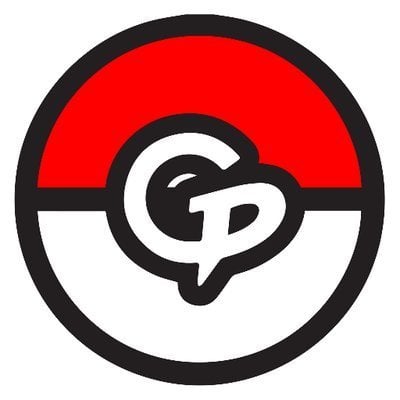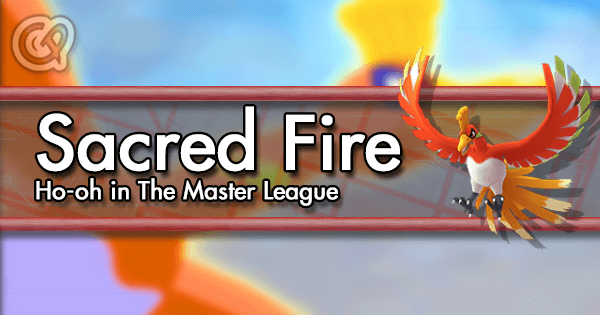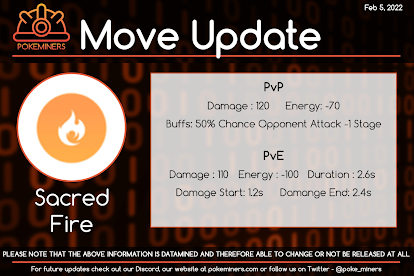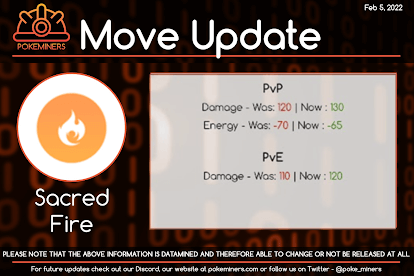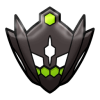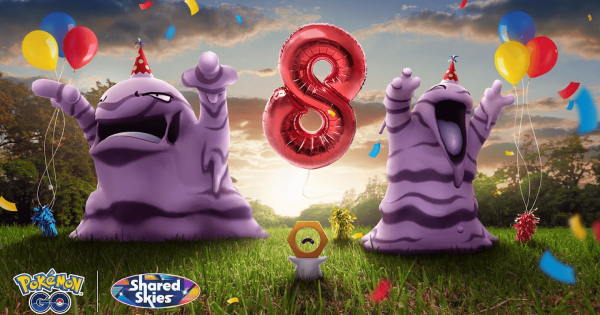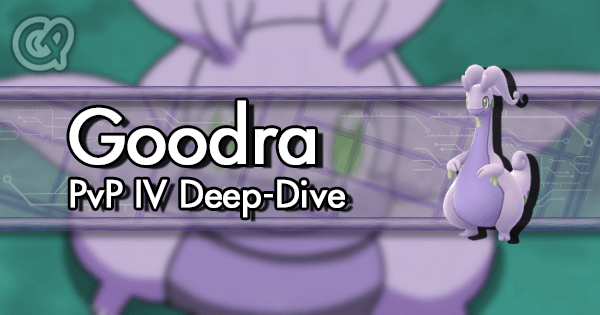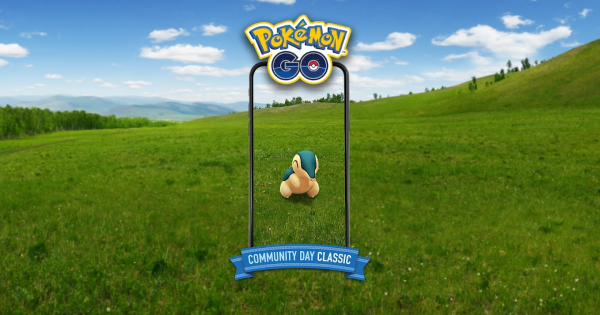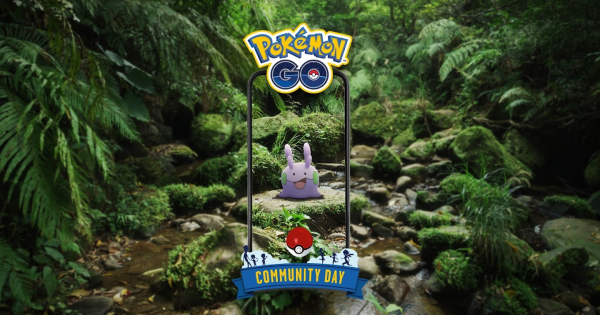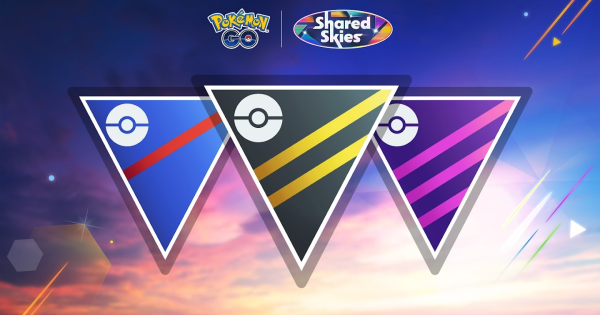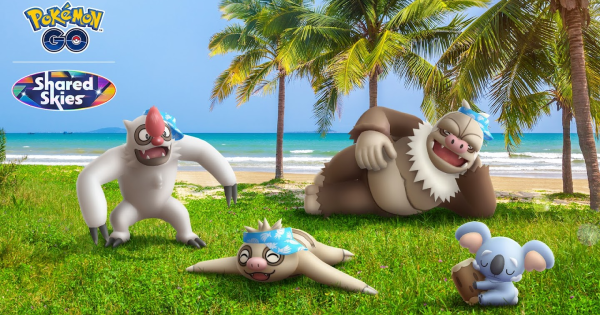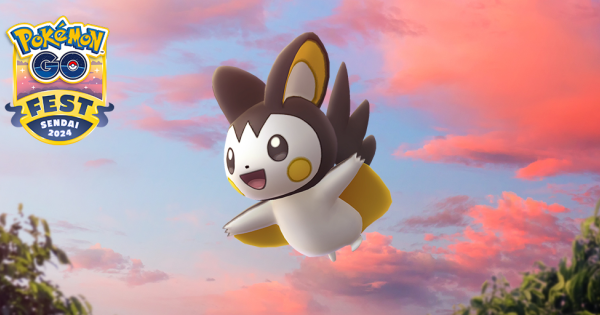In Season 10, Ho-Oh established itself as one of the most defining threats in the Master League, but its potential is not stopping there. On February 26, 2022, during Pokemon GO Tour: Johto Ho-Oh is slated to receive a special attack: its semi-signature move Sacred Fire. This guide will explain Ho-Oh’s current place and role in the Master League metagame and dive into the potential impact of Sacred Fire, including its pros/cons.
As a disclaimer: This guide will primarily focus on GO Battle League’s Master League Classic, with a few notes about Open Master League. Due to the similarities between the two formats, much of the information in this article can be applied to the latter league. This guide does not cover Great League or Ultra League.
Ho-Oh’s History and Current Role in the Master League Meta
For over 3 years, Ho-Oh was considered the butt end of Pokemon GO’s jokes when it comes to iconic legendaries. Before PvP came about, Ho-Oh was consistently a mediocre raiding choice despite its high stats, and it only got worse as more powerful options got released. Even in PvP, Ho-Oh remained unviable for a long time due to its awful fast moves combined with its prohibitively expensive charge moves. However, everything changed when Ho-Oh received Incinerate. Thanks to Incinerate’s generous energy gains, Ho-Oh can finally reasonably access its devastating charge moves and wreak havoc with its nearly unresisted move combination.
Ho-Oh is a core Pokemon in the Master League Classic, owing to its fairly unique typing, a stat product that surpasses even Dialga, and a powerful moveset. Ho-Oh’s resistances to Fairy, Ground, and Fighting offers it great matchups against many key threats such as Togekiss, Groudon, and Zacian (more on Zacian in a bit!). It also stands up quite well against Dialga, although the matchup may be inconsistent with proper fast move timing. These qualities enable Ho-Oh to be a good teammate to Dragon types. Pokemon like Zekrom, Dialga, Palkia, and Giratina are common teammate options, all acting as solid counters to Kyogre.
It is not all sunshine and rainbows for Ho-Oh, however. While its moveset packs immense power, Incinerate’s 5-turn duration combined with Ho-Oh’s expensive charge moves can feel unwieldy. Additionally, it has no move that costs less than 55 energy, rendering it incapable of doubling up its charge moves. Expensive charge moves combined with debuffing mechanics from Brave Bird makes shields a challenging obstacle to overcome. For instance, Ho-Oh’s matchup vs Togekiss can be tricky despite its type advantage and superior stats. Togekiss’s part Flying-type can often force Ho-Oh to debuff itself with Brave Bird, and with shields up, Togekiss can overwhelm Ho-Oh with Charm damage. Additionally, a low HP Ho-Oh must always be on the lookout for opposing attempts to snipe it with a strong fast move in the middle of Incinerate’s duration, especially after it debuffs itself with Brave Bird. As a result of its clunkiness, Ho-Oh wasn’t exactly the most popular Pokemon in the Master League. Make no mistake though - Ho-Oh was still a good Pokemon.
Late in Season 8, Zacian was released, and it would soon bend the entire metagame to its knees in the following seasons. However, this was the exact opportunity that Ho-Oh needed to rise and establish itself as a dominant force. Thanks to its resistance to Play Rough and Close Combat, Ho-Oh hardcounters every Zacian that lacks Wild Charge. Even those with Wild Charge don’t get past Ho-Oh easily due to Ho-Oh’s bulk. Ho-Oh also benefited from two metagame trends in Season 9 and 10: Zarude and Metagross. Zarude was a newer release; it is a strong Pokemon with a unique type combination, and Ho-Oh both counters it and pairs well with it. Metagross rose as one of the only safe answers to Zacian in the game; Ho-Oh completely and utterly demolishes it. Thus, Ho-Oh became one of the most common sights in those two seasons, being an excellent teammate for Zarude, Zacian, and various Dragon-type Pokemon.
And it is getting its signature move soon.
Sacred Fire’s Initial Stats
Image courtesy of Pokeminers.
On February 5, 2022, Niantic released Sacred Fire’s parameters to the game master. Featuring 120 power, 70 energy cost, and a 50% chance to reduce Attack by 1 stage, Sacred Fire was met with immediate disappointment by players. After all, every legendary and mythical signature move up until this point were granted excellent parameters, and players expected as much for one of GO Tour: Johto’s mascots.
The 70 energy cost was by far and away the biggest offender. Although Earthquake’s 65 energy cost is awkward due to requiring an extra Incinerate to cover for a measly 5 energy on its first use, it is compensated by Brave Bird costing 55 energy. The combined cost of those two moves is 120 energy, which is cleanly covered by 6 Incinerates. Using Earthquake into Brave Bird is Ho-Oh’s fastest and safest way to defeat enemies hiding behind a shield. Furthermore, Ho-Oh needs to use Earthquake into Brave Bird to win against Melmetal in the 1 shield (in Classic), or severely dent it (in Open). The sequence of moves can be used to cover other threats with the same timing, such as Excadrill, Landorus-I, and Mewtwo, although it is most significant against Melmetal due to Melmetal’s bulk and Flying resistance. Old Sacred Fire’s 70 energy’s cost meant that Brave Bird + Sacred Fire required 7 Incinerates. This slowed Ho-Oh enough that Melmetal can defeat it in the 1s as long as it timed its Rock Slide correctly. As the move exacerbated Ho-Oh’s energy issues, there was little reason to run this version of Sacred Fire over the existing Earthquake.
It may be worth noting that Sacred Fire’s lackluster parameters were potentially due to Ho-Oh’s popularity in the Master League Classic in Season 9 and 10. Niantic likely had to be very careful with Sacred Fire’s numbers so it would not make Ho-Oh an unstoppable beast. Nonetheless, it did not take long until they pushed an update to the move into the game master.
The Updated Sacred Fire and its Impact
Image courtesy of Pokeminers.
On February 8, Niantic released an update for Sacred Fire’s parameters. It gained a 10 damage buff and, very crucially, a 5 energy reduction to its cost. It kept its 50% chance to debuff Attack by 1 stage. Sacred Fire is now a very appealing option over Earthquake, maintaining the clean 6-Incinerate cost when combined with Brave Bird while providing other benefits. With Sacred Fire’s hype restored, let’s see what it brings to the table!
As a quick note: please don’t run Sacred Fire + Earthquake; it is not worth it to drop Brave Bird, Ho-Oh’s cheapest and most powerful charge move.
Sacred Fire’s immediate benefit is ensuring that Ho-Oh’s matchups against opposing Flying-type Pokemon become much more comfortable. Due to their double resistance to Earthquake, they can force Ho-Oh to Brave Bird and take advantage of the Defense debuff. In particular, Sacred Fire solves the issue of being forced out of the Togekiss matchup in extended fights (or having to bait with Earthquake), allowing Ho-Oh to fully counter it. Another huge improvement is its matchup against Lugia, which Ho-Oh now beats in the 0 shield and can go toe to toe with in extended fights, especially with Attack debuffs (more on the debuff later!). Lugia was a particularly daunting foe as it is extremely bulky and rarely needs to shield in this matchup. It can easily tank a Brave Bird and remain healthy enough to retaliate against a debuffed Ho-Oh. Ho-Oh now dominates the Yveltal matchup, easily taking it down simply by going straight Sacred Fire.
Sacred Fire’s high damage output allows Ho-Oh to burn through neutral targets without having to risk Brave Bird’s self debuff. In Master League Classic, Zacian can be dispatched in the 0s more comfortably. In either league, Snorlax can be comfortably overwhelmed in the 1s. Additionally, Sacred Fire’s high damage and potential Attack debuff mean it is less punishing for Ho-Oh and its team if its opponent catches the move with a resistant Pokemon.
On top of its amazing power, Sacred Fire also comes with a mighty 50% chance to score an Attack debuff. Although the move is expensive and Ho-Oh isn’t tanky enough to really stack debuffs on targets, there is tangible impact. In Master League Classic, it can help secure the 1s Dialga matchup sometimes. Normally, a Dialga with perfect timing combined with fast move sneaking can defeat a non-Best Buddied Ho-Oh going straight Iron Head right as it reaches its second move. Due to the game’s currently inconsistent mechanics, this situation doesn’t happen as often as it appears in simulations. With Sacred Fire’s debuff chance, Ho-Oh has another safeguard to further secure its advantage in that matchup. A Ho-Oh that successfully scores a double debuff beats Lugia in the 1s, and gets very close to overwhelming Dialga and Lugia in the 2s. Finally, landing a debuff on Melmetal and Landorus-I ensures that Ho-Oh’s HP won’t be too low after taking a Rock Slide, making it more difficult to snipe Ho-Oh with a strong fast move while it is in the middle of Incinerate’s long duration.
Sacred Fire’s Sacrifices
Running Sacred Fire comes at the cost of Earthquake’s coverage. Luckily, Both Sacred Fire and Earthquake crucially cover for Steel-type targets. However, there are a few Pokemon that will appreciate facing a Ho-Oh that opts for Sacred Fire. Zekrom is an immediately notable enemy - while it can normally beat Ho-Oh regardless, the threat of Earthquake meant that Zekrom had to be careful if Ho-Oh has a shield or energy advantage. Zekrom’s resistance to both Fire- and Flying-type moves means that it will not be threatened by Sacred Fire Ho-Oh in the slightest. Fire-resistant Pokemon in general can be problematic as they may force Ho-Oh to throw a Brave Bird, with Giratina and Reshiram being the primary issues, and Kyogre being even more unpleasant to play against. Although Dialga does not resist Fire, it can survive a Sacred Fire somewhat comfortably, allowing it to beat Ho-Oh in the 0 shield.
Certain niche Rock-type Pokemon are licking their lips in anticipation for Earthquake-less Ho-Oh. Regirock was recently given a slight buff with its new legacy move Earthquake, and looks to further solidify its place in the metagame as long as there are Ho-Ohs it can feast on. Shadow Tyranitar with Smack Down is a very spicy pick that can now tear down Ho-Oh without having to worry about shielding an Earthquake, should it come into a Ho-Oh that has an energy lead. These two options can already beat Earthquake Ho-Oh, but the matchups are now extremely lopsided. In terms of future releases, with Alola potentially being on the horizon, the release of Nihilego bodes well for it if it does not have to deal with Earthquake Ho-Oh.
Shadow Ho-Oh
GO Tour: Johto’s Masterwork Research grants players the opportunity to obtain Apex Shadow Ho-Oh. This variant of Shadow Ho-Oh comes with the exclusive move Sacred Fire+, becoming Sacred Fire++ when purified. These moves are more powerful in Raids and Gyms than regular Sacred Fire, but are functionally identical to regular Sacred Fire in PvP. By extension, Apex Shadow Ho-Oh is no different from Shadow Ho-Oh other than its fancy new visuals. However, as Apex Shadow Ho-Oh appears to be a research reward, it may have a 10/10/10 IV floor instead of 6/6/6.
The Shadow boost enables Ho-Oh to deal terrifying amounts of damage, such as beating Palkia in the 0s in Master League Classic because Brave Bird almost OHKOes it. It can get dangerously close to flipping the Kyogre matchup, being able to KO with Brave Bird after 5 Incinerates worth of chip damage. Thanks to the Shadow boost, a neutral Sacred Fire becomes almost as powerful as a regular Ho-Oh’s super effective Earthquake, allowing it to defeat Thunder-less Dialga in the 0s. The Shadow Boost also ensures that Ho-Oh can defeat Dialga in the 1s by using Sacred Fire or Earthquake into Brave Bird, avoiding the awkward situation of occasionally fainting with energy to a perfectly timed Dialga.
Unfortunately, Shadow Ho-Oh has a massive weakness - it is almost OHKOed by Melmetal’s Rock Slide and loses the 1s matchup. For a number of Ho-Oh teams, Melmetal can be a threatening adversary as it can punish common teammates such as Zarude and Dialga, and thus it is unwise to let Ho-Oh fall prey as well. Sacred Fire grants Ho-Oh a 50% chance to win the Melmetal matchup due to the Attack debuff, but that can hardly be considered reliable. Thus, Shadow Ho-Oh is best on teams that don’t have a Melmetal weakness to worry about. Shadow Ho-Oh can also lose the Wild Charge Zacian matchup in the 1s and 2s, although it will be able to deal significant damage with Incinerate.
Sacred Fire or Earthquake?
Sacred Fire’s ability to take on other Flying types and provide additional utility with Attack debuffs is generally worth having slightly worse matchups against Dragons and the rare Rock types. It also provides Ho-Oh with a better safety net against potential catch attempts. At worst, Sacred Fire will be a sidegrade. Ho-Oh will most likely prefer Sacred Fire going onwards, and this will be hype coming into GO Tour: Johto! At worst, Sacred Fire will be a sidegrade to Earthquake. Hold on to your Elite Charge TMs and Earthquake Ho-Ohs! If the rise of Sacred Fire Ho-Oh leads to Zekrom and Rock types being more common to handle it, then having the nasty surprise of Earthquake is an invaluable weapon. If you play in tournaments that allow moveset adjustments against different opponents, you will definitely want to have both options available.
Ho-Oh (non-Shadow) IVs
Bold indicates potentially flippable matchups. As in, Ho-Oh with adequate IVs normally wins these matchups, but missing these break/bulkpoints can cause it to lose.
ATK
- 15 - Excadrill
- 14 - Best Buddy Dialga, Landorus-I, Mewtwo
- 13 - Melmetal, Palkia, Snorlax (1-1)
- 11 - Groudon, Lugia, Mamoswine
The general rule of thumb in the Master League is to have 15 Attack IVs to CMP tie in the mirror matchup. Ho-Oh does have other perks of 15 Attack however. It hits breakpoint against Excadrill, and in Master League Classic, means that Ho-Oh KOes it in 6 Incinerates. In terms of futureproofing, 15 Attack ensures that Ho-Oh will win CMP against Arceus. Due to Incinerate’s long duration, hitting breakpoints tend to not matter much. However, in Open Master League, the Snorlax matchup can flip if the breakpoint is not met.
DEF
- 15 - Yveltal (0-1)
- 13 - Dragonite (Dragon Tail), Walrein (1-2)
- 12 - Mamoswine
- 11 - Garchomp (Dragon Tail)
13 Defense IV minimum is recommended; however the impact of these bulkpoints is soft compared to the Attack breakpoints. In Master League Classic, Yveltal and Walrein can flip in certain shield scenarios if the bulkpoints are not met.
HP
- 14 HP (with Best Buddy) - Best Best Buddy Dialga (1-1)
If you intend to use Best Buddy Ho-Oh, having 14 HP minimum is necessary to secure the 1s matchup against a perfectly timed + sneaking Best Buddy Dialga. Don’t worry about this matchup in Open Master League, as Ho-Oh wins with its extra HP.
Prioritize 15 Attack, and look for at least 13 Defense if possible. The 14 HP “bulkpoint” with Best Buddy is also very significant if you wish to truly secure the Dialga matchup. Ho-Oh isn’t the most IV-dependent Pokemon, and even something as low as 11/13/13 can function just fine, although settling that low is not recommended.
Shadow Ho-Oh IVs
The following IVs assume the IV floor of 10/10/10, as Apex Shadow Ho-Oh is encountered as a research reward. They can still be applied to any Shadow Ho-Oh.
ATK
- 15 - Giratina-O
- 14 - Landorus-I, Mewtwo
- 13 - Palkia (0-0)
- 12- Shadow Lugia, Mamoswine, Sylveon, Zacian
- 11 - Avalugg, Excadrill, Kyogre, Snorlax
In Master League Classic, the Palkia breakpoint enables Shadow Ho-Oh to defeat it in the 0s. However, it is not the end of the world if you don’t get it.
DEF
- 15 - Garchomp (Dragon Tail)
- 13 - Kyogre
- 12 - Sylveon
None of these matchups flip. However, these Pokemon are heavily fast move damage focused, so the extra damage from not hitting the bulkpoint can add up.
HP
- 15 (with Best Buddy) - Excadrill (1-1, also requires 15 Defense) Zarude (0-1, with 12 Defense min)
- 12 - Landorus-I (0-0, with 13 Defense min)
Generally speaking, HP has the least impact. In Master League Classic, x/15/15 Best Buddy Shadow Ho-Oh is JUST bulky enough to survive Excadrill’s Rock Slide after 10 Mud Shots, winning the matchup with 1 HP.
Closing Thoughts
The prospect of giving a top tier Pokemon an amazing move can be quite scary for game balance, but Ho-Oh can still largely be handled in the same way it’s always been dealt with. Although Lugia can no longer be relied on to stop it, Ho-Oh issues against Dragon types and Kyogre still remain. Rock-type coverage will continue to pose problems for Ho-Oh, and there are many wielders of it in the Master League metagame. Since Sacred Fire is as expensive as Earthquake, Ho-Oh can still have a hard time dealing with shields, and it remains incapable of doubling up. All in all, Sacred Fire is a hype addition and is worth raiding for, but will not turn Ho-Oh into the next monster that forces the entire metagame to kneel.

